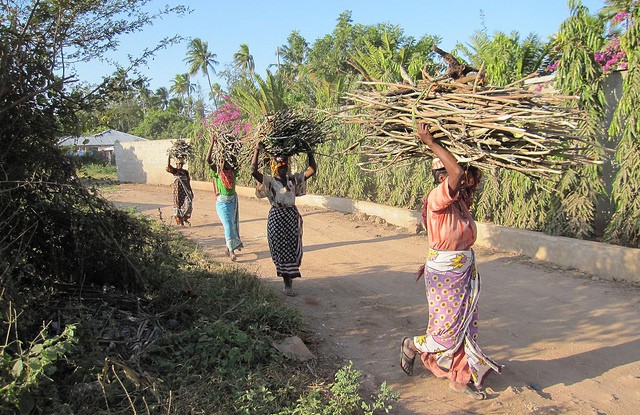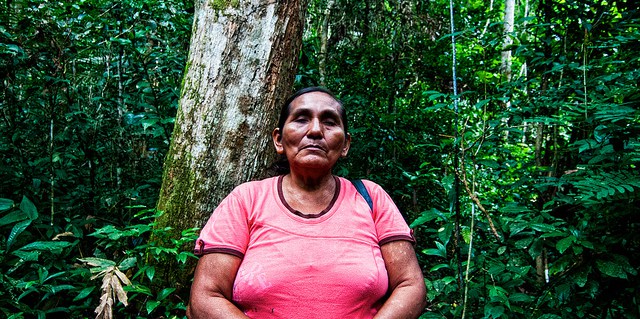
WARSAW, Poland (20 December 2013) — Despite the large quantity of climate-change research focused on adaptation, mitigation and gender, not much of it is leading to transformative action on the ground, said a top forestry expert at the recent U.N. climate talks in Warsaw, Poland.
Improving technology, generating political will, crafting gender sensitive policies and promoting strong women’s networks could help bolster the fight against climate change while improving gender relations and protecting forests, said Esther Mwangi, a senior scientist with the Forests and Governance Program at the Center for International Forestry Research (CIFOR).
“This is an ongoing puzzle — we need to think through this puzzle and generate insights into how the knowledge that has been produced can actually lead to certain outcomes and actions to advance our goals of gender equality,” she said in an introduction to a series of presentations on gender at the Global Landscapes Forum (GLF).
One proactive step towards addressing such issues includes constructing gender-transformative REDD+ (Reducing Emissions from Deforestation and forest Degradation) programs so that they weave gender equality and women’s rights into the fabric of their design, said Andrea Quesada-Aguilar, senior project coordinator with the Women’s Environment & Development Organization (WEDO) who conducted research in the province of Acre in Brazil, Ecuador, Nepal and Tanzania.
“Gender equality is not a reality in most parts of the world, and countries must ‘connect the dots’ among gender, forests and REDD+,” said Quesada-Aguilar.
“We must include gender-sensitive standards and safeguards in order to develop a gender-transformative strategy or program for REDD+ that changes paradigms and results in climate change solutions that contribute to the promotion of gender equality and women’s rights.”
TAKING AIM AT EMISSIONS
The REDD+ framework, which has been part of U.N. climate change negotiations since 2007, proposes that developing countries can reduce green house gases by reducing deforestation and degradation of forests, conserving forests, increasing the number of trees planted, and promoting sustainable forest management and use.
At the recent U.N. climate talks, the United States, Britain and Norway pledged a total of $280 million in financing for the Warsaw Framework for REDD+, which is intended to enhance various aspects of the agreement.
GENDER READY REDD+
WEDO undertook its gender research as part of the REDD+ Social and Environmental Standards (SES) program, which was established to protect indigenous people, local communities and women, and to ensure that REDD+ programs are developed to ensure they actually do good by improving livelihoods and environmental conditions. This includes contributing to the advancement of gender equality and safeguarding women’s rights.
By developing the guidelines and checklists in this manner, we have the added benefit of finding out the needs of women and men
WEDO developed guidelines were for countries developing national REDD+ programs, showing how strategies can address gender considerations and how they can be further adapted to review policies, design projects and evaluate on-going initiatives.
The researchers analyzed gender-differentiated use, access to and control of forest resources, as well as gender inequities observed in many forest-related processes, including participation, transparency and distribution of benefits.
They then created proposals for such policies as environmental, sustainable development, climate change initiatives, forestry programs and gender equality in each country.
“During our research, we asked women what they wanted to see and what were their concerns because, of course, men and women have different needs, preferences and contributions to make,” Quesada-Aguilar said.
“A common safeguard of REDD+ is the consultative process, but if women are unable to participate in decision-making, then it means that often half the population is not involved, which means this consultation process from the get-go is not well done.”
WEDO researchers developed a checklist tool to help countries move from being gender-blind to being gender-transformative.
“Capturing the gender dimension in a REDD+ program is a process, and it is key to a gender transformation of the forest sector, but it is not the end goal,” Quesada-Aguilar said.
“Rather, the end goal is to successfully implement the program and have a positive impact on gender equality.”
The project is opening a pathway to more effectively involve women who have been excluded for various reasons — and men — in the research process in order to increase the chances that research leads to real outcomes on the ground, Mwangi said.
“By developing the guidelines and checklists in this manner, we have the added benefit of finding out the needs of women and men,” she said.
For further information on the topics discussed in this article, please contact Esther Mwangi at e.mwangi@cgiar.org
This work forms part of the CGIAR Research Program on Forests, Trees and Agroforestry.
We want you to share Forests News content, which is licensed under Creative Commons Attribution-NonCommercial-ShareAlike 4.0 International (CC BY-NC-SA 4.0). This means you are free to redistribute our material for non-commercial purposes. All we ask is that you give Forests News appropriate credit and link to the original Forests News content, indicate if changes were made, and distribute your contributions under the same Creative Commons license. You must notify Forests News if you repost, reprint or reuse our materials by contacting forestsnews@cifor-icraf.org.

